Uncovering the secrets of the Hundred Years' War
The Hundred Years' War, a prolonged conflict between England and France, is a pivotal event in medieval warfare history. Lasting for 116 years, this complex series of battles and skirmishes had a profound impact on the course of European history.
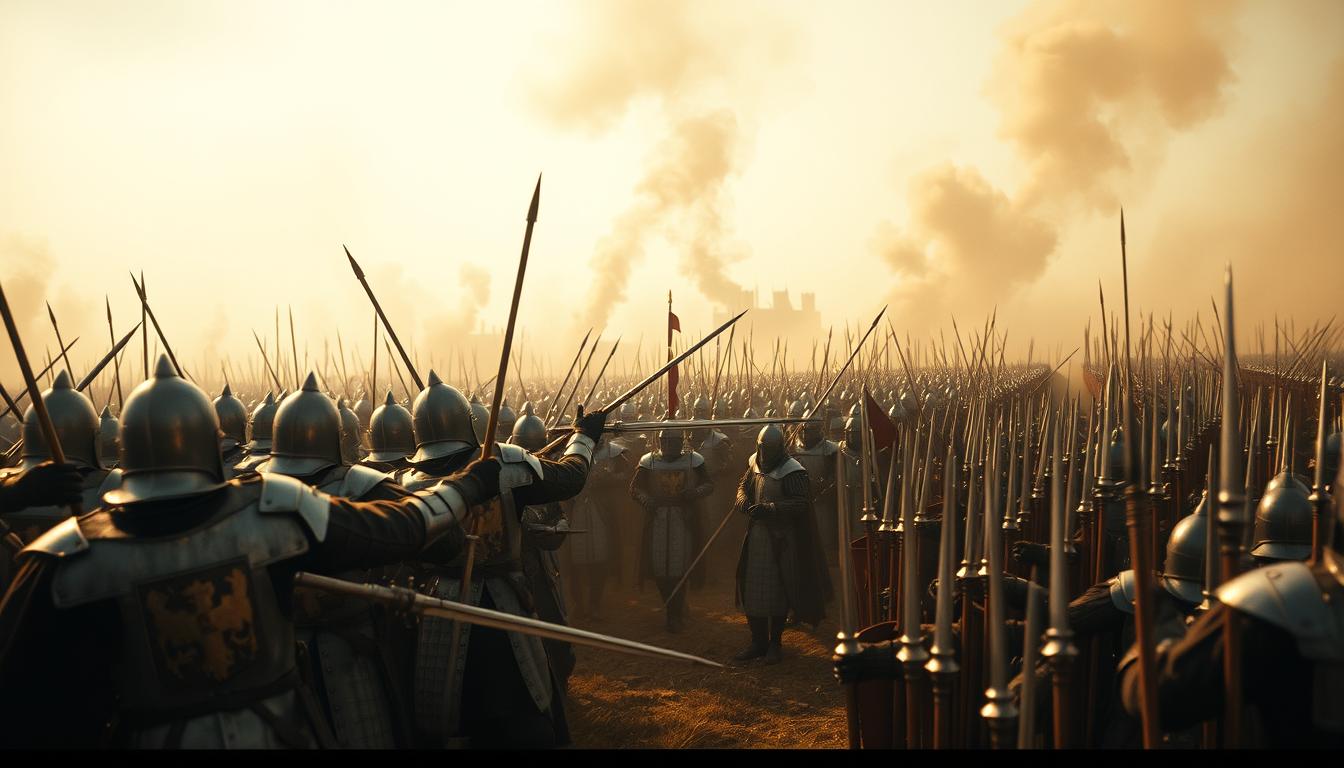
As we delve into the intricacies of this war, we begin to uncover hidden aspects of a conflict that shaped the fate of nations. From the causes that led to its outbreak to the significant battles that marked its progression, the Hundred Years' War is a rich tapestry of historical events waiting to be explored.
Key Takeaways
- Understanding the causes and key events of the Hundred Years' War.
- Exploring the impact of medieval warfare on the conflict.
- Uncovering the significant figures and their roles in the war.
- Analyzing the war's influence on European history.
- Examining the legacy of the Hundred Years' War in modern times.
The Origins of a Century-Long Conflict
At the heart of the Hundred Years' War lay a complex web of succession crises and territorial ambitions. The conflict between England and France was not merely a matter of military might but was deeply rooted in dynastic claims and economic interests.
Dynastic Claims to the French Throne
The dispute over the French throne was a significant catalyst for the war. Edward III of England claimed the French throne through his maternal lineage, challenging the French succession laws.
Edward III's Maternal Lineage
Edward III's mother, Isabella of France, was the daughter of Philip IV of France, providing Edward with a direct lineage to the French throne. This familial connection was a crucial argument in his claim.
Salic Law and Succession Disputes
The French, however, invoked the Salic Law, a legal code that prohibited succession through the female line. This law effectively barred Edward III from the throne, leading to a significant succession dispute.
The Confiscation of Gascony
Another critical factor was the confiscation of Gascony by Philip VI of France. Gascony was an English territory in southwestern France, and its confiscation had significant economic implications.
Economic Importance of the Region
Gascony was crucial for the English economy, particularly due to its wine production. The loss of this territory threatened English economic interests and contributed to the tensions leading to the Hundred Years' War.
Desmond Seward once noted, "The Hundred Years War was as much a civil war as a national conflict."
This observation highlights the complex nature of the conflict, involving both dynastic and territorial disputes.
Key Players Who Shaped the War
The Hundred Years' War was a complex conflict influenced by various individuals with distinct ambitions and strategies. The war was shaped by the interactions and decisions of several key players, whose actions had significant impacts on its progression and outcome.
Edward III and His Ambitious Vision
Edward III of England played a pivotal role in initiating the Hundred Years' War. His claim to the French throne was not merely a dynastic ambition but a strategic move to expand English territories and influence. Edward III's military campaigns and diplomatic maneuvers set the stage for the prolonged conflict.
Philip VI and the Valois Dynasty
Philip VI, the first king of the Valois dynasty, faced the challenge of defending the French throne against Edward III's claims. His reign was marked by efforts to consolidate power and resist English aggression, setting the tone for the Valois dynasty's stance during the war.
https://www.youtube.com/watch?v=shRPlEzxBxU
The Black Prince: England's Warrior Hero
The Black Prince, Edward III's eldest son, was a renowned military leader whose victories, particularly at the Battle of Crécy and the Battle of Poitiers, were crucial to English successes during the war. His military prowess and chivalric reputation made him a legendary figure.
Charles V the Wise: France's Strategic Genius
Charles V, who ruled France from 1364 to 1380, is remembered for his strategic genius. He implemented significant military and financial reforms, leveraging the work of constable Bertrand du Guesclin to turn the tide of the war in favor of the French. His reign marked a turning point in the conflict.
| Key Player | Role | Impact |
|---|---|---|
| Edward III | King of England | Initiated the war with his claim to the French throne |
| Philip VI | King of France | Defended the French throne against Edward III's claims |
| The Black Prince | English Military Leader | Secured crucial victories for the English |
| Charles V | King of France | Implemented reforms that turned the war in France's favor |
The First Phase: Edwardian War (1337-1360)
The year 1337 saw the outbreak of the Edwardian War, the first major phase of the Hundred Years' War. This period was marked by significant English victories that showcased their military prowess, particularly the use of the English longbow.
The Naval Battle of Sluys: Control of the Channel
The Edwardian War began with a decisive naval victory for the English at the Battle of Sluys in 1340. This battle gave England control over the English Channel, facilitating further military campaigns in France.
The Battle of Crécy and English Longbows
The Battle of Crécy in 1346 was a landmark English victory, largely due to the effectiveness of the English longbow. The longbow's range and firepower outclassed the French knights, demonstrating a significant shift in medieval warfare tactics.
The Siege of Calais: A Foothold in France
Following Crécy, the English successfully besieged Calais, capturing the city in 1347. This provided England with a crucial foothold in France, which remained under English control for over two centuries.
The Black Death's Devastating Impact
The Black Death, which struck Europe in the late 1340s, had a profound impact on both England and France, decimating populations and affecting the course of the war. The pandemic led to significant social and economic changes, influencing the progression of the conflict.
The Treaty of Brétigny: A False Peace
After decades of conflict, the Treaty of Brétigny emerged as a significant, albeit temporary, peace agreement between England and France in 1360. This treaty was a landmark moment in the Hundred Years' War, marking a brief period of respite from the violence that had ravaged both countries.
Terms and Territorial Exchanges
The Treaty of Brétigny was notable for its territorial adjustments. England gained significant territories in France, including Calais, Gascony, and other regions, in exchange for renouncing its claim to the French throne. This exchange was seen as a major concession by the English, but it ultimately proved to be a temporary measure.
The treaty's terms also involved substantial territorial exchanges, with the English securing control over several key French territories. However, the agreement's complexity and the challenges of implementing these territorial changes contributed to future tensions.
King John II's Ransom and Captivity
One of the treaty's most significant provisions was the agreement to release King John II of France from English captivity in exchange for a substantial ransom. King John II had been captured by the English at the Battle of Poitiers in 1356 and was being held prisoner.
The ransom was set at three million gold écus, a staggering amount that placed a heavy burden on the French economy. The payment of this ransom was to be made in installments, but it was not completed as agreed, leading to further complications.
Why the Peace Collapsed So Quickly
Despite the initial optimism surrounding the Treaty of Brétigny, the peace it established was short-lived. Several factors contributed to its collapse, including disagreements over the treaty's terms and the failure to complete King John II's ransom payments.
| Reasons for Collapse | Description | Impact |
|---|---|---|
| Disagreements over Treaty Terms | The complexity and ambiguity of the treaty's terms led to differing interpretations by the English and French. | Renewed Tensions |
| Failure to Complete Ransom Payments | The French struggled to pay the ransom for King John II, leading to a breach of the treaty's conditions. | Increased Hostility |
| Territorial Disputes | The territorial exchanges agreed upon in the treaty were not fully implemented, causing further conflict. | Escalation of War |
The Treaty of Brétigny ultimately failed to bring lasting peace, and its collapse marked the beginning of another phase of the Hundred Years' War. Understanding the reasons behind its failure provides valuable insights into the complexities of medieval diplomacy and conflict resolution.
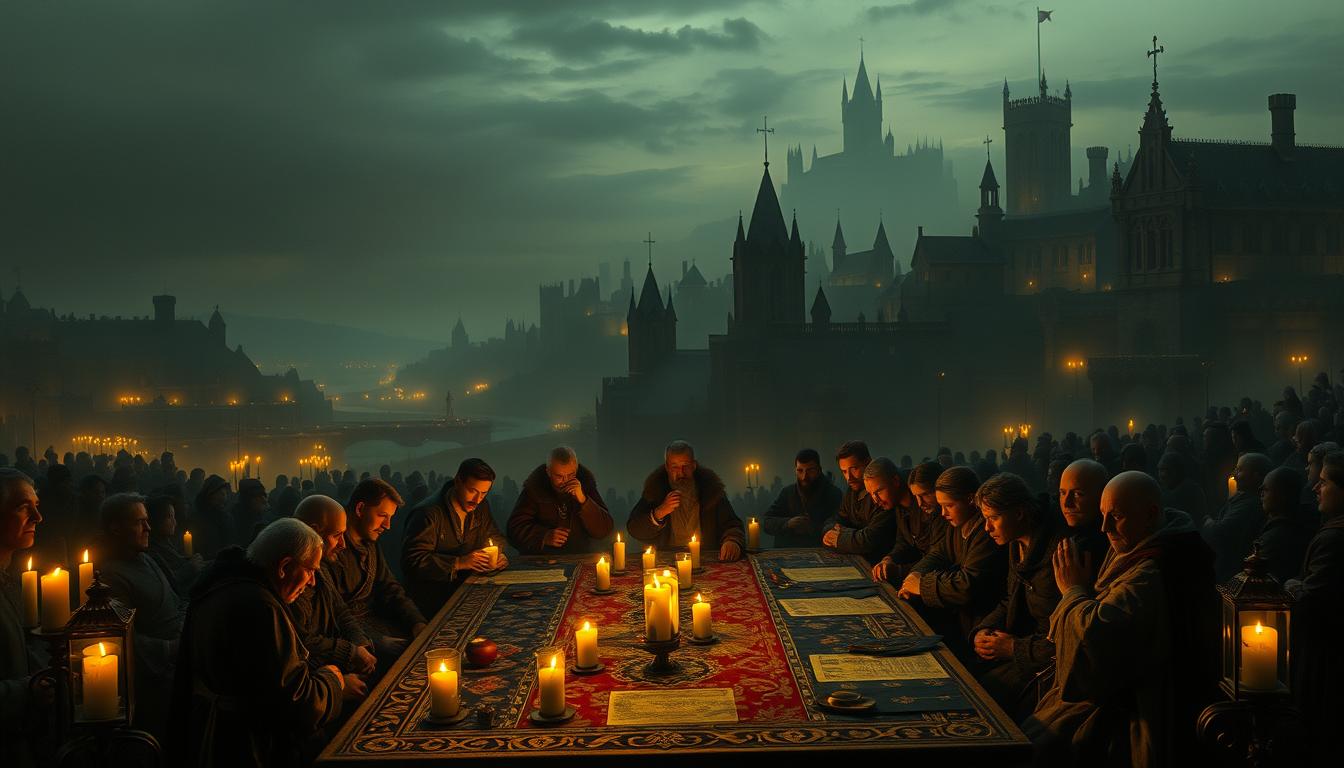
The Caroline Phase: French Resurgence (1369-1389)
Charles V's strategic reforms characterized the Caroline Phase of the Hundred Years' War, marking a period of significant French resurgence. This era, spanning from 1369 to 1389, was defined by Charles V's military and financial reforms, which laid the groundwork for France's recovery.
The reforms implemented by Charles V were multifaceted, aiming to strengthen the French military and economy. One of the key aspects was the reorganization of the military, making it more efficient and effective. This period also saw the rise of Bertrand du Guesclin, a renowned military leader who employed guerrilla warfare tactics to great success.
Charles V's Military and Financial Reforms
Charles V's reforms were pivotal in turning the tide of the war in favor of France. He focused on rebuilding the French army, improving its discipline, and enhancing its tactical capabilities. Financial reforms were also crucial, as they ensured a steady supply of funds to support the military efforts.
Bertrand du Guesclin's Guerrilla Warfare
Bertrand du Guesclin's adoption of guerrilla warfare tactics was a game-changer. By avoiding direct confrontations and employing hit-and-run strategies, du Guesclin was able to weaken the English forces significantly. His tactics not only drained English resources but also boosted French morale.
English Losses and Territorial Shrinkage
The Caroline Phase saw substantial English losses and a significant shrinkage of their territories in France. The effective French strategies under Charles V and du Guesclin led to the recapture of several key territories.
| Territory | Status Before Caroline Phase | Status After Caroline Phase |
|---|---|---|
| Poitiers | Under English Control | Recaptured by France |
| La Rochelle | Under English Influence | Regained by France |
| Bordeaux | English Territory | Remained Under English Control |
| Normandy | Partial English Control | Largely Freed from English Influence |
The Caroline Phase was a critical period in the Hundred Years' War, marking a significant shift in favor of the French. The strategic leadership of Charles V and the military prowess of Bertrand du Guesclin were instrumental in this French resurgence.
Uncovering the Secrets of the Hundred Years' War: Hidden Aspects
Delving deeper into the Hundred Years' War reveals a complex web of espionage, diplomacy, and mercenary activities that significantly influenced the conflict's trajectory.
Medieval Espionage Networks
The Hundred Years' War saw the extensive use of medieval espionage networks. Spies and informants played crucial roles in gathering intelligence on enemy troop movements and plans.
Code Systems and Secret Messages
To communicate securely, both sides employed code systems and secret messages. These ranged from simple substitution ciphers to more complex encryption methods.
Double Agents and Informants
The use of double agents and informants was also prevalent. These individuals would infiltrate the enemy's ranks, providing valuable information back to their employers.
Diplomatic Intrigues Behind the Scenes
Alongside espionage, diplomatic intrigues played a significant role. Ambassadors and nobles engaged in complex negotiations, often with the goal of securing alliances or sowing discord among the enemy's ranks.
The Role of Mercenaries and Free Companies
Mercenaries and free companies were another crucial element. These groups, often composed of seasoned veterans, would fight for the highest bidder, switching sides as it suited their interests.
| Aspect | Description | Impact |
|---|---|---|
| Medieval Espionage | Use of spies and informants to gather intelligence | Influenced troop movements and battle strategies |
| Diplomatic Intrigues | Complex negotiations and alliances | Affected the balance of power between England and France |
| Mercenaries | Fighting for the highest bidder | Added unpredictability to the conflict |
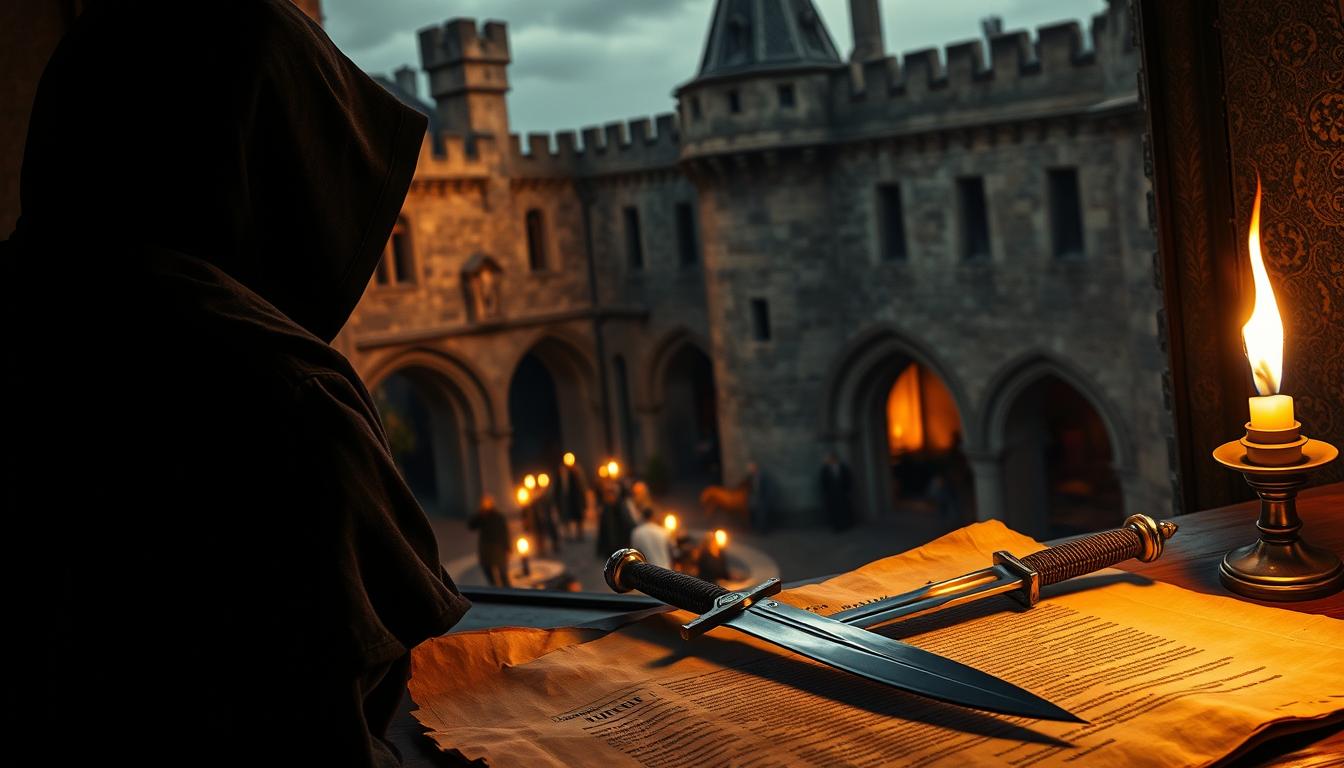
Forgotten Heroes and Overlooked Battles
While many battles and heroes are well-known, others remain in the shadows. Uncovering these forgotten heroes and overlooked battles provides a more nuanced understanding of the Hundred Years' War.
Revolutionary Military Innovations
The Hundred Years' War was a crucible for military innovation, driven by the need for tactical superiority. This prolonged conflict saw the introduction of several groundbreaking technologies and strategies that significantly impacted the course of the war.
The English Longbow: A Game-Changing Weapon
The English longbow emerged as a decisive factor in several key battles, including the Battle of Crécy and the Battle of Agincourt. Its range, accuracy, and rate of fire gave English forces a significant advantage over their French counterparts. The longbow's impact was so profound that it became a symbol of English military prowess.
Gunpowder Revolution and Early Cannons
The introduction of gunpowder and early cannons marked a significant shift in warfare. Initially cumbersome and unreliable, cannons gradually became more effective, playing a crucial role in siege warfare and eventually changing the nature of fortifications and defensive strategies.
| Innovation | Impact |
|---|---|
| English Longbow | Enhanced ranged combat capabilities |
| Gunpowder and Cannons | Revolutionized siege warfare and fortification designs |
| Evolution of Armor | Improved defensive capabilities against new weapons |
Evolution of Armor and Defensive Tactics
In response to new weaponry, armor evolved to provide better protection. Defensive tactics also adapted, with a greater emphasis on fortifications and strategic positioning.
New Castle Designs and Siege Warfare
The advent of gunpowder led to changes in castle design, with fortifications becoming more complex to counter the new threat. Siege warfare tactics also evolved, incorporating cannons and other gunpowder-based weapons.
The Lancastrian Phase and Henry V
As the Hundred Years' War entered its Lancastrian phase, Henry V emerged as a pivotal figure, renowned for his military genius. His ascension to the English throne in 1413 marked the beginning of a new era in the conflict.
Henry V's Rise and Military Genius
Henry V's military prowess was evident in his early campaigns in France. He successfully revived English claims to the French throne, leveraging his military strength and strategic thinking. His victories were not merely a result of brute force but were also attributed to his ability to adapt and innovate on the battlefield.
The Battle of Agincourt: Against All Odds
The Battle of Agincourt in 1415 is one of the most celebrated English victories in the Hundred Years' War. Despite being outnumbered, Henry V's forces emerged victorious due to a combination of factors.
The Muddy Battlefield Advantage
The muddy terrain of the battlefield significantly hindered the French cavalry, allowing the English longbowmen to inflict heavy casualties.
French Tactical Errors
The French forces made critical tactical errors, including crowding their troops on the battlefield, which exacerbated the impact of the English longbowmen.
| Factors | English Advantage | French Disadvantage |
|---|---|---|
| Terrain | Muddy ground hindered French cavalry | Restricted mobility for French troops |
| Tactics | Effective use of longbowmen | Crowding of troops led to increased casualties |
The Treaty of Troyes and Dual Monarchy Dream
The Treaty of Troyes in 1420 was a significant diplomatic achievement for Henry V, recognizing him as the heir to the French throne and paving the way for a potential dual monarchy.
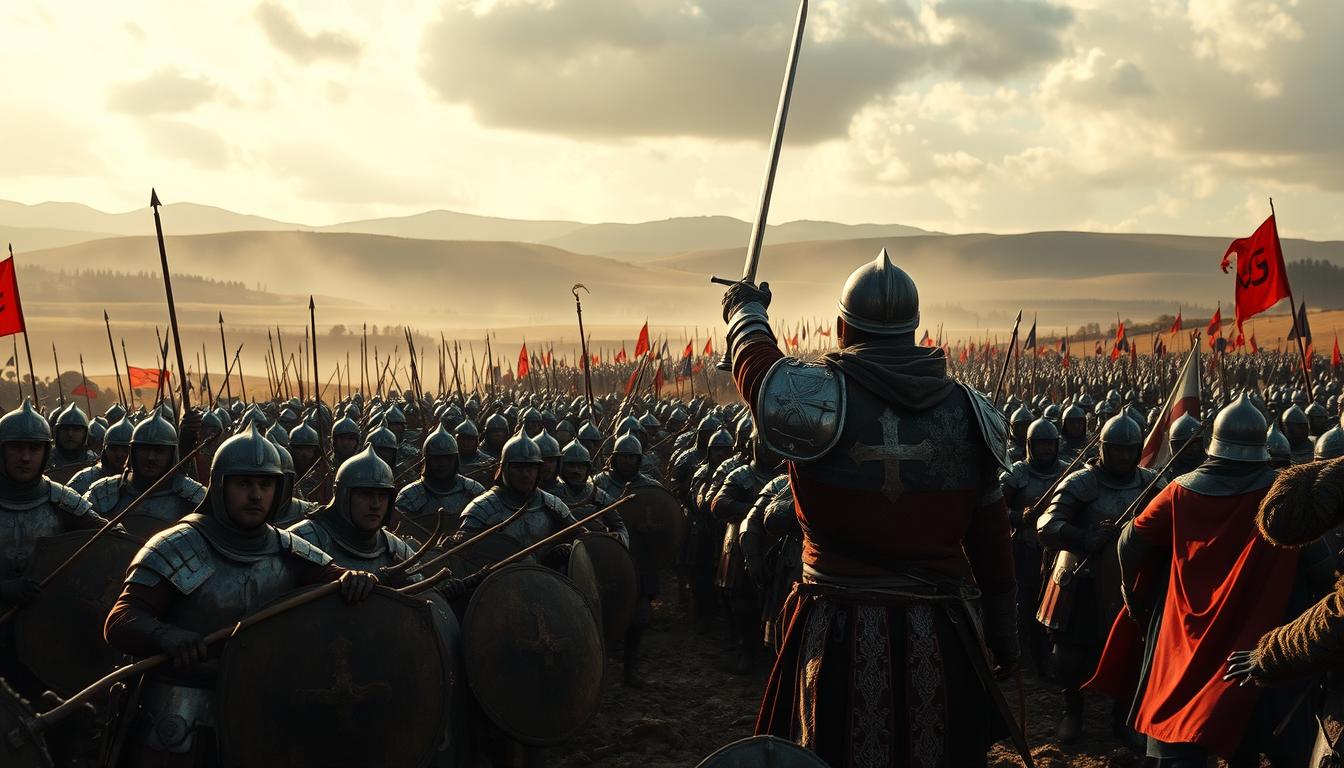
Henry V's military achievements and diplomatic successes during the Lancastrian phase of the Hundred Years' War left a lasting legacy, shaping the course of English and French history.
Joan of Arc and the Turning Point
In the midst of the Hundred Years' War, a figure emerged that would change the course of history: Joan of Arc. This young peasant girl from Domremy became the symbol of French resistance against English rule.
The Mysterious Visions of a Peasant Girl
Joan of Arc claimed to have received divine visions from Saint Catherine, Saint Margaret, and the Archangel Michael, instructing her to drive the English out of France and crown the Dauphin Charles VII king at Reims.
The Miraculous Relief of Orléans
In 1429, Joan of Arc led the French army to the relief of Orléans, a city under siege by the English for over a year. Her arrival marked a turning point, as the city's capture was reversed, boosting French morale and paving the way for future victories.
Charles VII's Coronation at Reims
Following the success at Orléans, Joan accompanied the French army to several other victories, culminating in the coronation of Charles VII at Reims. This event legitimized Charles VII's claim to the throne and further galvanized the French resistance.
Capture, Trial, and Martyrdom
Captured by the Burgundians in 1430 and sold to the English, Joan was put on trial for heresy and witchcraft. Despite her defense, she was convicted and executed by burning at the stake in Rouan in 1431.
Political Motivations Behind Her Execution
The trial and execution of Joan of Arc were heavily influenced by political motivations. The English saw her as a threat to their control over France, and her execution was a means to undermine French morale and legitimacy.
The Final Phase and French Victory
As the Hundred Years' War entered its final phase, Charles VII's strategic military reforms and alliances began to bear fruit, paving the way for a French victory.
Charles VII's Professional Army Reforms
Charles VII implemented significant military reforms, creating a more disciplined and professional army. This included the establishment of the Compagnies d'Ordonnance, which were the first standing armies in Europe. These reforms allowed the French to challenge English dominance more effectively.
The Battle of Formigny: Breaking English Power
The Battle of Formigny in 1450 was a crucial turning point, as French forces decisively defeated the English, breaking their hold on Normandy. This victory showcased the effectiveness of Charles VII's military reforms and marked a significant shift in the balance of power.
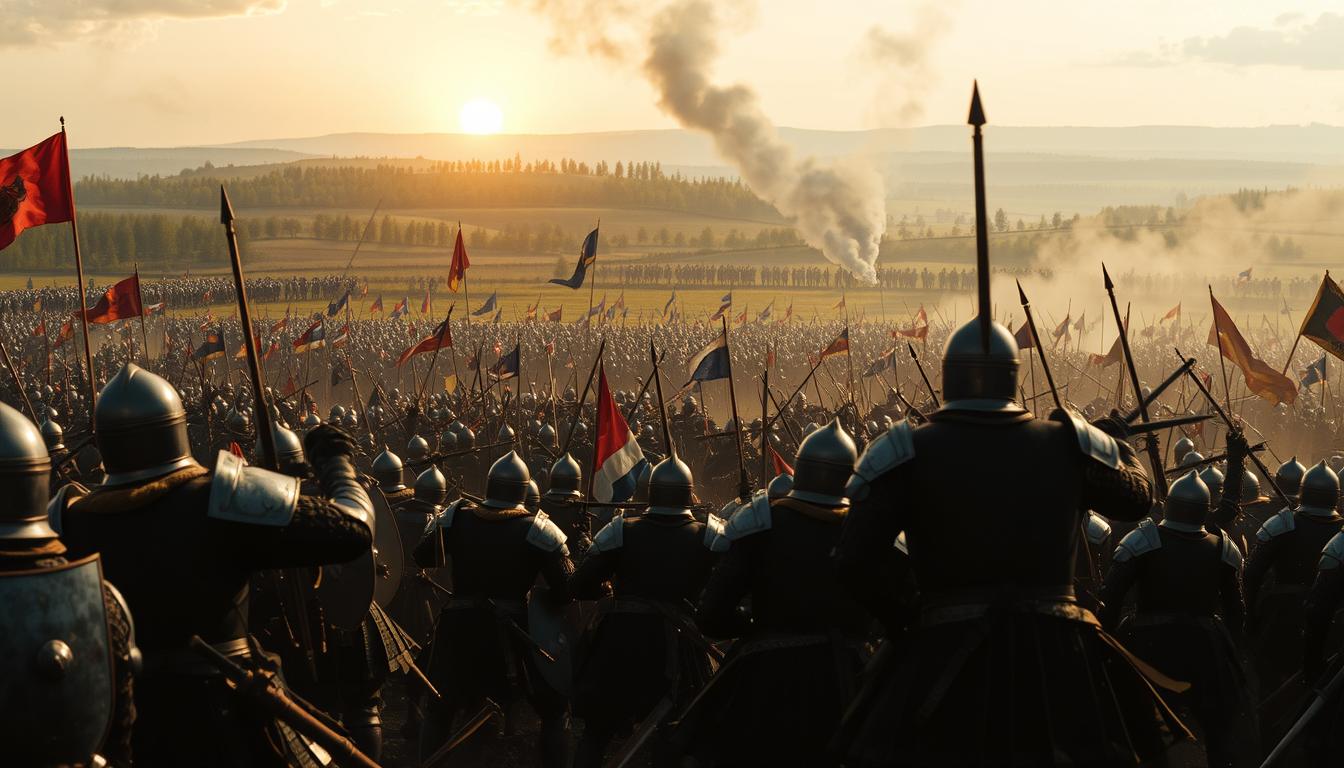
The Fall of Bordeaux and English Withdrawal
Following the success at Formigny, the French continued their campaign, capturing key cities such as Bordeaux in 1453. The fall of Bordeaux marked the end of English control in Gascony, a region that had been a point of contention throughout the war. The English withdrawal from these territories signified the end of the Hundred Years' War.
Internal English Conflicts: The Wars of the Roses
The English were further weakened by internal conflicts, most notably the Wars of the Roses, a series of civil wars that drained their resources and diverted their attention from continental affairs. This internal strife contributed to their inability to maintain a strong presence in France, ultimately leading to their withdrawal.
Legacy and Transformation of Nations
The Hundred Years' War left an indelible mark on the nations involved, shaping their identities and futures. The conflict between France and England had far-reaching consequences that extended beyond the battlefield, influencing various aspects of society and culture.
The Birth of French and English National Identity
The prolonged struggle fostered a sense of national identity in both France and England. The war effort required the mobilization of resources and people, leading to a heightened sense of unity and shared purpose among the populace.
Economic and Social Transformations
The war drove economic transformations, as both countries had to adapt to the demands of prolonged conflict. This included the development of new military technologies and strategies, as well as changes in trade and commerce.
| Aspect | Pre-War | Post-War |
|---|---|---|
| National Identity | Feudal allegiances | Emergence of national consciousness |
| Economic Structure | Agricultural economy | Growth of trade and commerce |
| Military Tactics | Traditional chivalry | Innovative use of longbows and gunpowder |
The End of Medieval Chivalry
The Hundred Years' War marked the decline of medieval chivalry, as traditional knightly warfare gave way to more modern tactics and technologies.
Cultural and Artistic Expressions of the Conflict
The war inspired various cultural expressions, including literature, art, and architecture. Chronicles and historical accounts from the period provide valuable insights into the experiences and perceptions of those who lived through the conflict.
Literature and Chronicles
Works such as Froissart's Chronicles offer detailed narratives of the war, highlighting key events and figures.
Art and Architecture
The conflict influenced art and architecture, with many structures built or modified during this period reflecting the military and cultural priorities of the time.
Conclusion: Echoes of the Hundred Years' War in Modern Times
The Hundred Years' War, a conflict that spanned over a century, has left an indelible mark on European history. Its legacy continues to resonate in modern times, shaping national identities, influencing military strategies, and informing diplomatic relations.
The war's impact on the development of France and England cannot be overstated. The conflict fostered the growth of national identity, as both countries began to define themselves in opposition to one another. This nascent nationalism has had lasting effects, contributing to the complex and often fraught relationship between the two nations.
The legacy of the Hundred Years' War can be seen in the modern military doctrines of both France and the United Kingdom. The innovative tactics and technologies employed during the conflict, such as the English longbow and gunpowder, revolutionized warfare and paved the way for future military advancements.
As we reflect on the Hundred Years' War, we are reminded of the enduring power of historical events to shape our present and inform our future. The modern echoes of this conflict serve as a testament to the importance of understanding the complexities of the past.

.jpeg)